Discover the Heartbeat of Spain: Your Ultimate Tourist Guide to Madrid
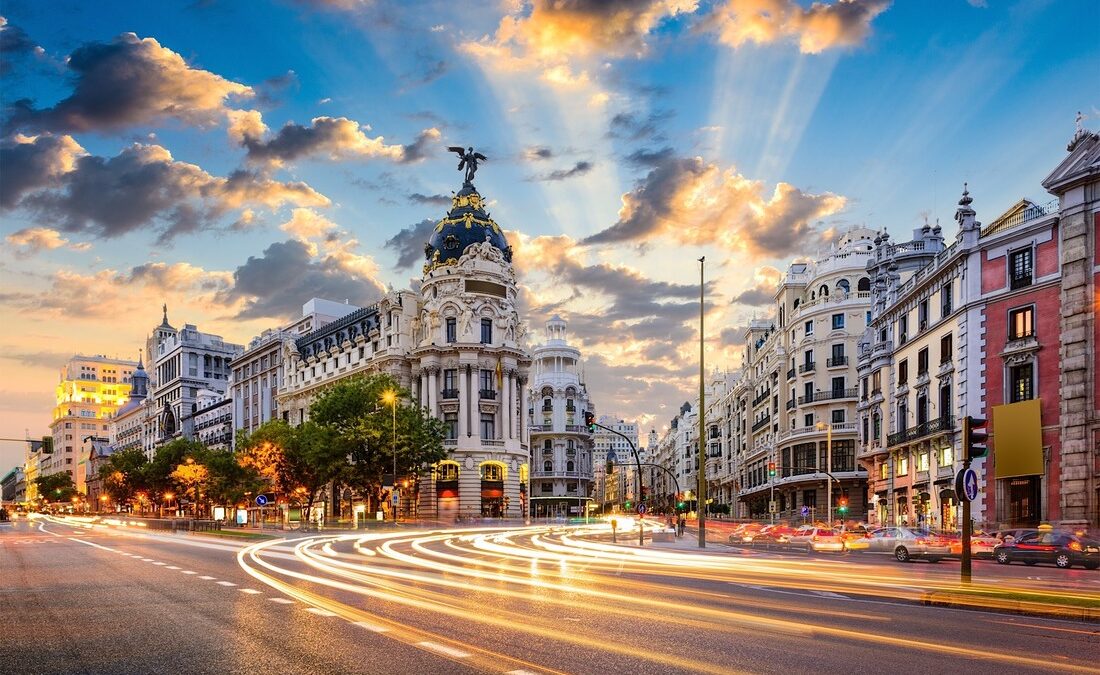
Discover the Heartbeat of Spain: Your Ultimate Tourist Guide to Madrid
Welcome to Madrid, the vibrant and bustling capital of Spain, a city where history, culture, and modernity blend seamlessly. Renowned for its grand architecture, world-class museums, lively plazas, and delectable cuisine, Madrid offers an unforgettable experience for every traveler. This comprehensive guide provides everything you need to know for an enriching visit to Madrid, including its history, key attractions, unique features, and culinary delights.
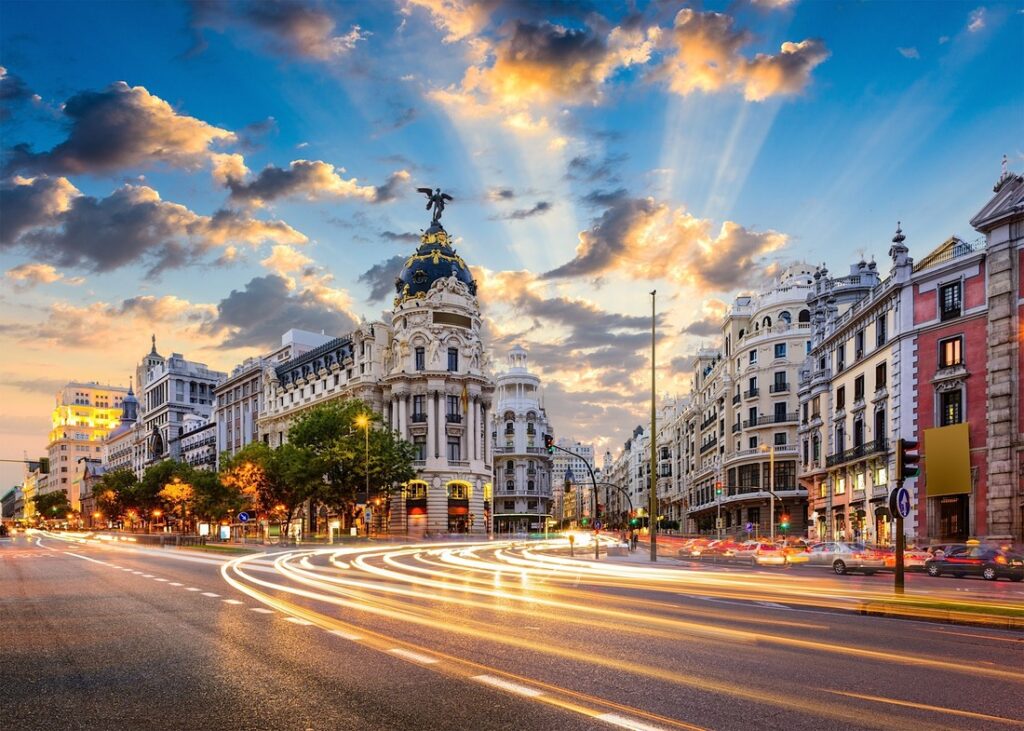
A Glimpse into the History of Madrid
Historical Background
Madrid’s history stretches back over a thousand years, with its origins dating to the times when it was a small fortress town. The city has evolved through various historical epochs, from medieval times to the modern era, each leaving its unique mark on Madrid’s cultural and architectural landscape.
Medieval Madrid
Madrid’s roots can be traced to the 9th century when the Moors built a fortress on the site that is now the Royal Palace. The town grew around this fortress, benefiting from its strategic location in the heart of the Iberian Peninsula.
The Habsburg and Bourbon Eras
Madrid became the capital of Spain in 1561 under King Philip II, marking the beginning of its transformation into a major European city. The Habsburgs and Bourbons left a significant architectural legacy, including grand palaces, churches, and public buildings that define Madrid’s historic center.
Modern Development
The 19th and 20th centuries saw Madrid’s expansion and modernization, with the construction of wide boulevards, parks, and cultural institutions. Today, Madrid is a dynamic metropolis that seamlessly blends its rich heritage with contemporary urban life.
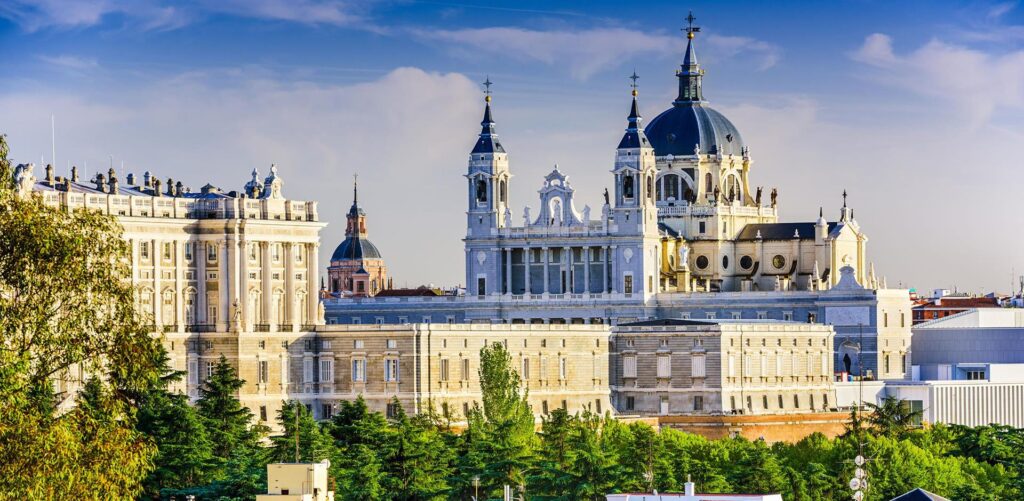
Key Attractions of Madrid
The Royal Palace (Palacio Real)
The Royal Palace is one of Madrid’s most iconic landmarks and the official residence of the Spanish Royal Family, although it is now primarily used for state ceremonies.
- Architectural Grandeur: Explore the palace’s stunning architecture, with its grand facade, opulent interiors, and beautifully landscaped gardens.
- Royal Collections: Discover the extensive collection of art, furniture, and historical artifacts displayed throughout the palace’s lavish rooms.
- Changing of the Guard: Witness the ceremonial Changing of the Guard, a tradition that adds to the palace’s regal ambiance.
Prado Museum (Museo del Prado)
The Prado Museum is one of the world’s leading art museums, home to an unrivaled collection of European masterpieces.
- Spanish Masterpieces: Admire works by Spanish masters such as Velázquez, Goya, and El Greco, including iconic paintings like “Las Meninas” and “The Third of May 1808.”
- European Art: Explore the museum’s extensive collection of European art, featuring works by artists such as Bosch, Titian, Rubens, and Rembrandt.
- Temporary Exhibitions: The Prado also hosts temporary exhibitions that provide fresh perspectives on its permanent collection and highlight specific artists or themes.
Retiro Park (Parque del Retiro)
Retiro Park is a sprawling urban oasis in the heart of Madrid, offering a tranquil escape from the city’s hustle and bustle.
- Monumental Structures: Visit the park’s iconic landmarks, including the Crystal Palace (Palacio de Cristal) and the Monument to Alfonso XII.
- Boating on the Lake: Rent a rowboat and enjoy a leisurely paddle on the park’s large lake, a popular activity for locals and tourists alike.
- Cultural Events: Retiro Park hosts various cultural events and festivals throughout the year, adding to its vibrant atmosphere.
Puerta del Sol
Puerta del Sol is one of Madrid’s most famous squares and a central hub of activity in the city.
- Kilometer Zero: Visit the Kilometer Zero plaque, the point from which all distances in Spain are measured.
- Historical Landmarks: Explore the square’s historic landmarks, including the statue of the Bear and the Strawberry Tree (El Oso y el Madroño), the symbol of Madrid.
- New Year’s Eve Celebrations: Puerta del Sol is renowned for its New Year’s Eve celebrations, where thousands gather to welcome the new year with the traditional eating of twelve grapes.
Plaza Mayor
Plaza Mayor is a grand square in the heart of Madrid, surrounded by historic buildings and vibrant cafes.
- Architectural Beauty: Admire the square’s stunning architecture, characterized by its uniform three-story buildings and beautiful frescoes on the Casa de la Panadería.
- Cultural Events: Plaza Mayor hosts various cultural events, markets, and festivals throughout the year, adding to its lively atmosphere.
- Dining and Shopping: Enjoy a meal or a drink at one of the many cafes and restaurants that line the square, or browse the shops for souvenirs and local crafts.
Gran Via
Gran Via is Madrid’s bustling main thoroughfare, known for its vibrant nightlife, shopping, and entertainment.
- Historic Theatres: Discover Gran Via’s historic theatres, such as the Teatro Lope de Vega and the Teatro Rialto, which host a variety of performances and musicals.
- Shopping Paradise: Shop for international brands, local boutiques, and everything in between on this lively avenue.
- Architectural Marvels: Admire the grand architecture of Gran Via’s buildings, including the iconic Metropolis Building and the Telefónica Building.
Thyssen-Bornemisza Museum
The Thyssen-Bornemisza Museum is part of Madrid’s “Golden Triangle of Art,” along with the Prado and the Reina Sofia museums.
- Diverse Collection: Explore the museum’s diverse collection, which spans from the medieval period to the modern era, featuring works by artists such as Van Gogh, Monet, and Picasso.
- Impressionism and Modern Art: The museum is particularly renowned for its collection of Impressionist and Post-Impressionist art, as well as its 20th-century works.
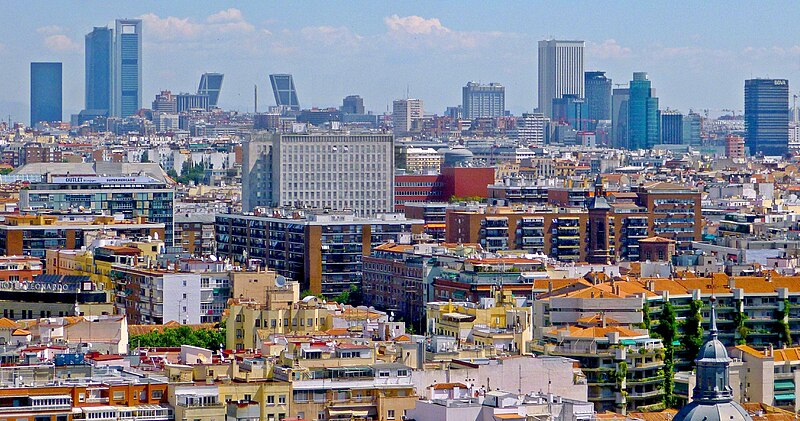
Unique Features of Madrid
Flamenco Culture
Madrid is a hub for flamenco, the passionate and soulful art form that combines music, dance, and singing.
- Flamenco Shows: Experience an authentic flamenco performance at one of Madrid’s renowned tablaos, such as Corral de la Morería or Casa Patas.
- Flamenco Festivals: Attend one of the city’s flamenco festivals, such as the Suma Flamenca, which features performances by some of the world’s leading flamenco artists.
Literary Heritage
Madrid has a rich literary heritage, with connections to some of Spain’s greatest writers, including Miguel de Cervantes and Lope de Vega.
- Literary Quarter (Barrio de las Letras): Stroll through the Literary Quarter, where many famous Spanish writers lived and worked. The area is filled with quotes from their works inscribed on the streets.
- Casa de Lope de Vega: Visit the former home of playwright Lope de Vega, now a museum dedicated to his life and work.
Culinary Delights of Madrid
Madrid’s culinary scene is a delightful blend of traditional Spanish dishes and innovative modern cuisine.
Traditional Dishes
- Cocido Madrileño: Savor Cocido Madrileño, a hearty chickpea stew with meat and vegetables, traditionally served in three courses.
- Callos a la Madrileña: Try Callos a la Madrileña, a flavorful tripe stew cooked with chorizo and blood sausage, a Madrid specialty.
- Bocadillo de Calamares: Enjoy a Bocadillo de Calamares, a delicious sandwich filled with fried calamari rings, often enjoyed as a quick snack or lunch.
Tapas Culture
Madrid is famous for its tapas culture, where small plates of food are enjoyed with drinks, often shared among friends.
- La Latina: Explore the lively La Latina neighborhood, known for its bustling tapas bars and vibrant atmosphere.
- El Mercado de San Miguel: Visit El Mercado de San Miguel, a historic market turned gourmet food hall, offering a wide variety of tapas and Spanish delicacies.
Fine Dining
Madrid boasts several Michelin-starred restaurants and fine dining establishments that offer gourmet cuisine and exceptional service.
- DiverXO: Experience the innovative cuisine of DiverXO, Madrid’s only three-Michelin-starred restaurant, known for its avant-garde dishes and theatrical presentation.
- Santceloni: Enjoy a meal at Santceloni, a two-Michelin-starred restaurant that combines traditional Spanish flavors with contemporary techniques.
Practical Information for Tourists
Getting There
Madrid is well-connected by air, road, and rail, making it easily accessible for both domestic and international travelers.
- By Air: Adolfo Suárez Madrid-Barajas Airport (MAD) is one of Europe’s busiest airports, offering flights to and from major cities worldwide.
- By Train: Madrid’s Atocha and Chamartín train stations provide regular services to destinations across Spain and Europe, including high-speed AVE trains.
- By Bus: The city’s bus terminals, such as Estación Sur and Avenida de América, offer frequent services to various cities across Spain and beyond.
Getting Around
Madrid’s efficient public transportation system makes it easy to explore the city.
- Metro: The Madrid Metro is one of the largest and most modern in Europe, covering most areas of the city and providing a fast and convenient way to travel.
- Buses: The city’s extensive bus network complements the metro, offering routes to areas not covered by the subway.
- Taxis and Ride-Sharing: Taxis are readily available, and ride-sharing services like Uber and Cabify operate in Madrid.
Accommodation
Madrid offers a range of accommodation options to suit every budget and preference, from luxury hotels to budget-friendly hostels.
- Luxury Hotels: Stay in one of Madrid’s luxurious hotels, such as the Westin Palace or the Ritz-Carlton, for an unforgettable experience that combines modern comforts with historic charm.
- Boutique Hotels: Choose a boutique hotel for personalized service and unique accommodations that reflect the city’s character, such as Only YOU Boutique Hotel or Hotel Único.
- Budget-Friendly Options: For travelers on a budget, Madrid offers several hostels and affordable hotels that provide comfortable and convenient lodging, such as Ok Hostel Madrid or Room007 Chueca Hostel.
Language and Currency
The official language of Madrid is Spanish, but many residents also speak basic English, especially in tourist areas. The currency is the Euro (EUR), and credit cards are widely accepted. ATMs are available throughout the city, but it’s advisable to carry some cash for smaller establishments and markets.
Tips for an Enjoyable Visit
Plan Your Visit
To make the most of your time in Madrid, it’s helpful to plan ahead and prioritize the attractions and activities that interest you the most.
- Early Arrival: Arrive early at popular attractions to avoid crowds and make the most of your visit.
- Guided Tours: Consider joining a guided tour to gain deeper insights into the history and significance of Madrid’s landmarks.
Respect Local Customs
While visiting Madrid, it’s important to respect local customs and traditions.
- Siesta Time: Be aware that many shops and businesses close for a siesta in the afternoon, typically from 2 PM to 5 PM.
- Dining Hours: Dinner in Madrid is usually served late, with restaurants opening around 8 PM and locals dining as late as 10 PM or 11 PM.
Capture the Moment
Madrid is a city of stunning views and picturesque scenes, so be sure to bring your camera or smartphone to capture its beauty.
- Best Views: Take advantage of the city’s many viewpoints, such as the rooftop terrace of the Círculo de Bellas Artes, for breathtaking photos of the skyline and historic sites.
- Golden Hour: Visit key landmarks during the golden hour (just after sunrise or before sunset) for the best lighting and most beautiful photos.
Must-See Highlights at Madrid
El Rastro Flea Market
El Rastro is Madrid’s largest and most famous flea market, held every Sunday in the La Latina neighborhood.
- Unique Finds: Browse a wide array of goods, including antiques, vintage clothing, art, and souvenirs.
- Lively Atmosphere: Experience the vibrant and bustling atmosphere, with street performers, food stalls, and locals mingling and shopping.
Temple of Debod
The Temple of Debod is an ancient Egyptian temple that was gifted to Spain and reconstructed in Madrid’s Parque del Oeste.
- Historical Significance: Learn about the temple’s history and its journey from Egypt to Spain.
- Sunset Views: Enjoy stunning sunset views over the city from the temple’s picturesque location.
Santiago Bernabéu Stadium
For sports enthusiasts, a visit to Santiago Bernabéu Stadium, home to the legendary Real Madrid football club, is a must.
- Stadium Tour: Take a guided tour of the stadium to explore its history, visit the trophy room, and see behind-the-scenes areas such as the players’ locker rooms and the pitch.
- Match Day Experience: If you’re lucky enough to be in Madrid during a match, experiencing a Real Madrid game at Santiago Bernabéu is an unforgettable experience.
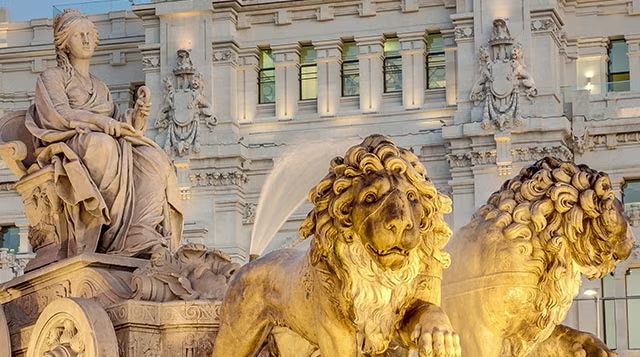
Conclusion
Madrid is a city that captivates visitors with its rich history, vibrant culture, and dynamic energy. From its iconic landmarks and world-class museums to its lively plazas and culinary delights, Madrid offers an unforgettable experience for all who visit. Plan your trip to Madrid and immerse yourself in the beauty, history, and charm of Spain’s vibrant capital. Embrace the opportunity to explore, discover, and create lasting memories in this enchanting city.

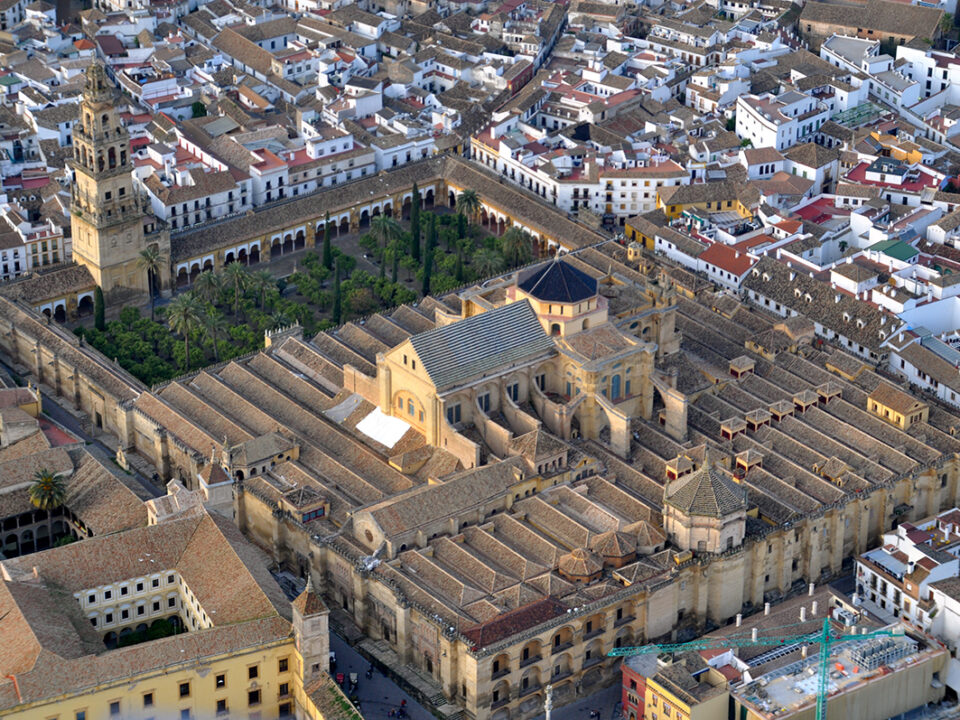

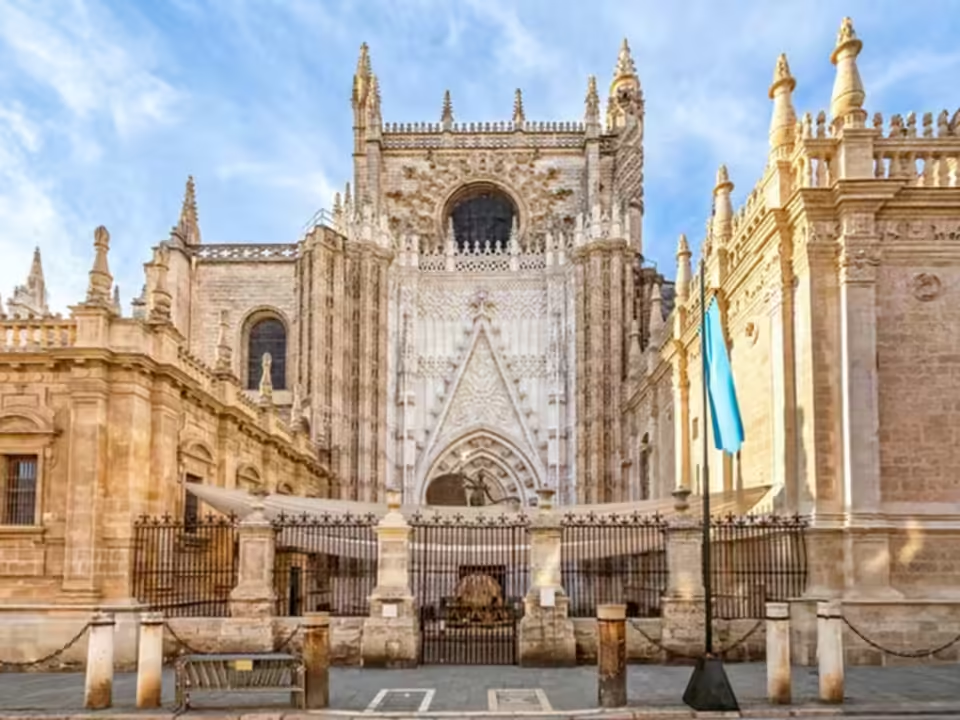
1 Comment
[…] essential to remember that even though a city like Madrid has a permanent location, estar is still used to describe where it […]